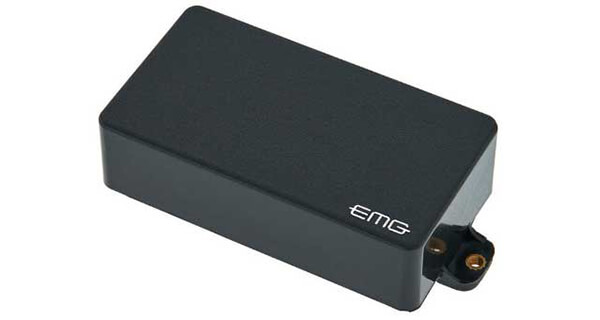Do Active Pickups Work without a Battery [Solved]
Electric guitars have undergone significant advancements since their inception, with one of the most notable innovations being the introduction of active pickups. These pickups, often associated with modern metal & hard rock genres. It offers unparalleled clarity, high output with an extended tonal range.

However, a burning question persists among guitar enthusiasts: do active pickups work without a battery? In this guide, we delve into the intricacies of active pickups, their dependence on batteries, the lifespan of these batteries, the signs of a dying battery, and much more.
# Table of Contents =>
- 1 About the Active Pickups: A Brief Overview –
- 2 The Battery-Power Connection: Can Active Pickups Function Without a Battery?
- 3 Advantages of Active Pickup Batteries: A Balanced Perspective –
- 4 Battery Lifespan: How Long Do Active Pickup Batteries Last?
- 5 FAQs –
- 5.1 Question 1: How long does the battery in active pickups last?
- 5.2 Question 2: What are the signs of a dying battery in active pickups?
- 5.3 Question 3: Can I use rechargeable batteries for active pickups?
- 5.4 Question 4: Can I prevent my battery from dying during a performance?
- 5.5 Question 5: Do all guitars with active pickups use the same type of battery?
- 5.6 Question 6: Are there any alternative solutions to using batteries with active pickups?
About the Active Pickups: A Brief Overview –

Active pickups differ from their passive counterparts in that they require an onboard power source, usually a 9-volt battery. Passive pickups rely solely on the magnetic properties of their coils to capture string vibrations and translate them into an electrical signal.
In contrast, active pickups incorporate a preamp circuit powered by the battery, which boosts the signal before it reaches the amplifier. This boost results in a cleaner, more articulate sound, free from the interference and noise that can afflict passive pickups.
The Battery-Power Connection: Can Active Pickups Function Without a Battery?
The short answer is no; active pickups cannot function without a battery. The preamp circuit within active pickups demands a power source to amplify the signal. Without the battery’s voltage, the preamp remains inactive, rendering the pickups virtually silent. This reliance on batteries has both its advantages and drawbacks.
Advantages of Active Pickup Batteries: A Balanced Perspective –
a) Enhanced Signal Strength:

Active pickups produce a stronger signal due to the preamp’s signal boosting capabilities. This results in improved clarity and a more robust tonal character, making them particularly popular in high-gain scenarios.
b) Extended Tonality:
The boosted signal allows for a broader tonal spectrum, enabling guitarists to explore a wide range of sounds.
c) Reduced Noise:
Active pickups are less susceptible to interference and noise, which can be prevalent in passive pickups.
Battery Lifespan: How Long Do Active Pickup Batteries Last?
The lifespan of an active pickup battery varies based on factors such as usage frequency, the type of battery, and the guitar’s electronics. On average, a high-quality 9-volt alkaline battery can power active pickups for around 300 to 500 hours of playing time. Rechargeable batteries are also an option, though they might provide slightly shorter playtime before requiring recharging or replacement.
The Telltale Signs of a Dying Battery: What to Watch For –
a) Diminished Output:
As the battery’s power dwindles, the pickup’s output strength decreases, resulting in a noticeable reduction in volume and clarity.
b) Loss of High Frequencies:

Active pickups rely on a boosted signal to maintain their extended frequency response. A dying battery can lead to a loss of high frequencies, causing the tone to sound dull and lifeless.
c) Increased Noise:
As the battery’s voltage drops, the preamp’s ability to reject noise weakens, leading to an increase in unwanted hum and interference.
d) Intermittent Cutouts:
In some cases, a dying battery can cause the pickups to cut out intermittently, disrupting the continuity of your playing.
Changing the Battery: A Step-by-Step Guide
a) Locate the Battery Compartment:

Battery access is usually found on the back or side of guitars with active pickups.
b) Remove the Old Battery:

Gently disconnect the old battery and dispose of it properly. Be cautious not to damage any wires or connections in the process.
c) Insert the New Battery:
Place the fresh 9-volt battery in the compartment, ensuring proper polarity (+ and -).
d) Reconnect Wires:

If necessary, reconnect any wires that were disconnected during the battery replacement.
e) Test the Pickup:

Play your guitar and check for the restoration of volume, clarity, and tone.
In the realm of electric guitars, active pickups stand as a testament to innovation and sonic excellence. While they require a battery to function, this minor inconvenience is outweighed by the unparalleled tonal capabilities they offer.
Understanding the role of the battery in powering these pickups, their lifespan, and the signs of a dying battery equips guitarists to harness the full potential of their instruments. So, next time you plug in your electric guitar with active pickups, remember the battery that fuels your sonic journey. Now, clear about the question about “Do Active Pickups Work without a Battery”.
FAQs –
Question 1: How long does the battery in active pickups last?
Answer: The lifespan of an active pickup battery varies, but on average, a high-quality 9-volt alkaline battery can power active pickups for approximately 300 to 500 hours of playing time. Rechargeable batteries are an option, but they might provide slightly shorter playtime before needing recharging or replacement.
Question 2: What are the signs of a dying battery in active pickups?
Answer: Signs of a dying battery include diminished output (reduced volume and clarity), loss of high frequencies leading to a dull tone, increased noise and interference, and intermittent cutouts in sound during playing.
Question 3: Can I use rechargeable batteries for active pickups?
Answer: Yes, you can use rechargeable batteries for active pickups. However, keep in mind that rechargeable batteries might offer slightly shorter playtime compared to regular alkaline batteries. Always make sure to recharge or replace them before a performance.
Question 4: Can I prevent my battery from dying during a performance?
Answer: While it’s challenging to predict exactly when a battery will die, you can take precautions:
- Always have spare batteries on hand.
- Regularly check the battery’s voltage level before gigs or important sessions.
- Consider using a battery tester to gauge battery health.
- Unplug your guitar when not in use to conserve battery life.
Question 5: Do all guitars with active pickups use the same type of battery?
Answer: Most guitars with active pickups use a 9-volt battery, but it’s essential to check your guitar’s specifications or manufacturer recommendations to ensure you’re using the correct type of battery.
Question 6: Are there any alternative solutions to using batteries with active pickups?
Answer: Using a battery is the primary method to power active pickups. Some newer models might incorporate USB or rechargeable options, but these methods still involve powering the preamp circuit, often through a battery source.
Last Updated on September 14, 2023 by Perry Garner


